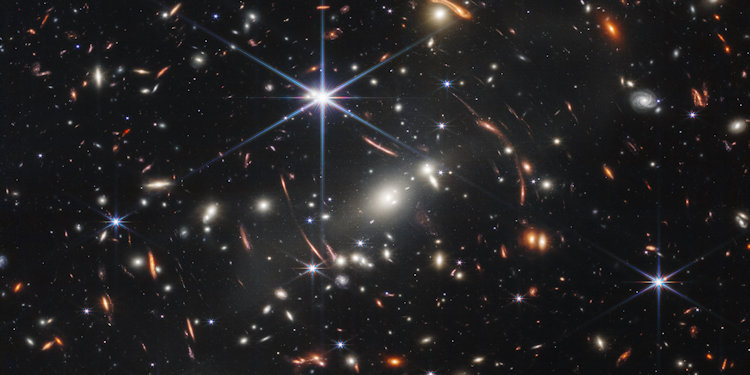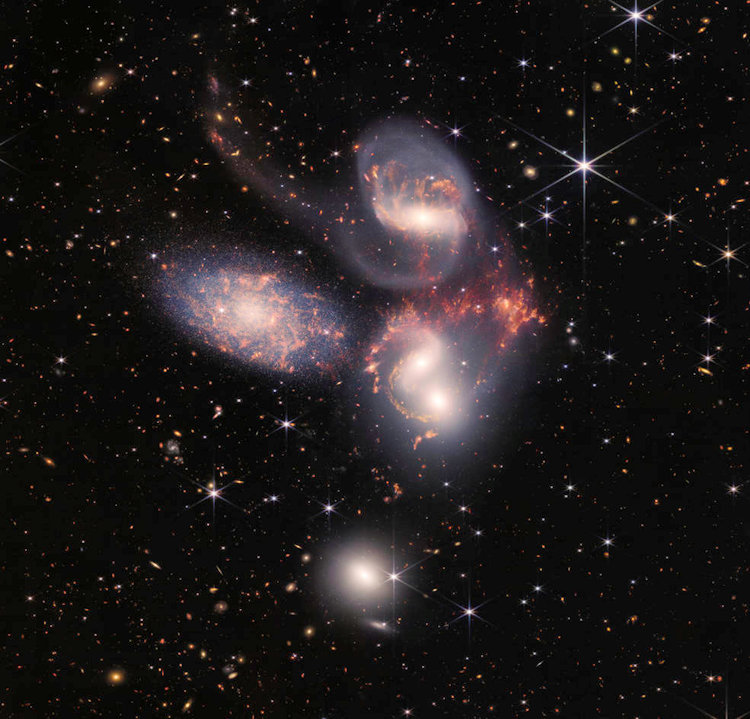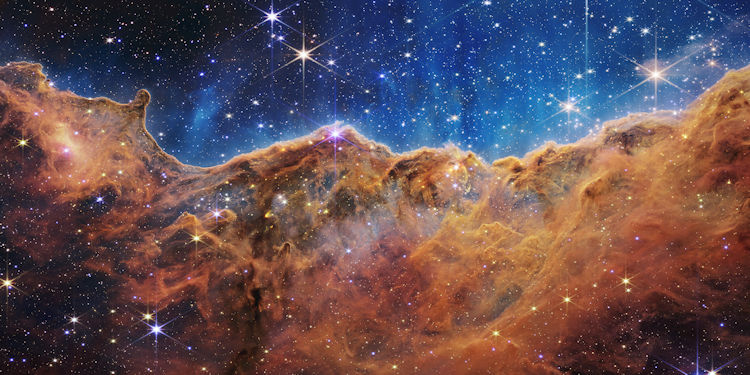
Monday last, President Joe Biden held a press conference in which NASA afforded him the opportunity to release the first official photograph of an image captured by the powerful Webb telescope, previewing Tuesday’s official release of a handful of pictures. The image he revealed was of SMACS 0723, an image of grand galactic goulash with clarity and conciseness never before seen by human eyes.
Known as SMACS J0723.3-7327 by its more official, coordinate-infused name, one might expect this object revealed by the President to have connections with his natal chart. Well, this galactic grouping appears on the zodiac at 23 Scorpio 35 - a degree which virtually bisects the Sun and Venus in Biden’s natal chart and trines his Jupiter in Cancer. There’s an astrological eyebrow raiser for you!

This galactic cluster image reveals the effects of gravitational lensing such as is organically conducted by gigantic galactic goodies like the Great Attractor and the Shapley Attractor. This is the property of being so gravitationally significant the object bends light such that what lies behind the object can be seen.
These images come from an infrared camera developed by a team at the University of Arizona. Why infrared? It is easier for this spectrum of “light,” albeit invisible to see through the dust clouds of space.
While taking in these images, the question that seemed to echo through the galactic dust clouds was: “Cool. Where are they?” So, with a few notes provided by NASA, following are the zodiacal degrees for the initial collection of objects. These coordinates are for epoch 2000.0. To factor in the precession that occurred in the past twenty-two years and get you halfway through 2022, add approximately 19 minutes of zodiacal arc.
Here are a few thoughts and the coordinates for the other images:
Stephan's Quintet, NGC 7318B, at 26 Pisces 16
Look familiar? In a far more primitive image this collection of five galaxies was once used in the movie It’s a Wonderful Life.

The Carina Nebula, NGC 3324 at 19 Libra 20
The illusion of a landscape created by viewing the edge of an immense gaseous cavity within the nebula.

For the remaining two images of the initial handful, visit: https://www.nasa.gov/webbfirstimages
Southern Ring Nebula, NGC 3132 at 23 Virgo 50
Wasp 96-b at 7 Pisces 27
This is actually a diagram of the light wavelength of a hot, giant, gaseous exoplanet. An exoplanet is a planet orbiting a star that is not our Sun. According to the Exosolar Planets Encyclopedia there are 5,113 suspected planets around other stars. As well there are 2,638 planet candidates yet to be confirmed and within this combing of planets more than 820 multiple planets systems - as in more than one planet orbiting a star system outside of our own.
Here’s to these images stirring you to maintain a “keep looking up” to arouse awe, inspire creativity and seek solace in the Heavens.